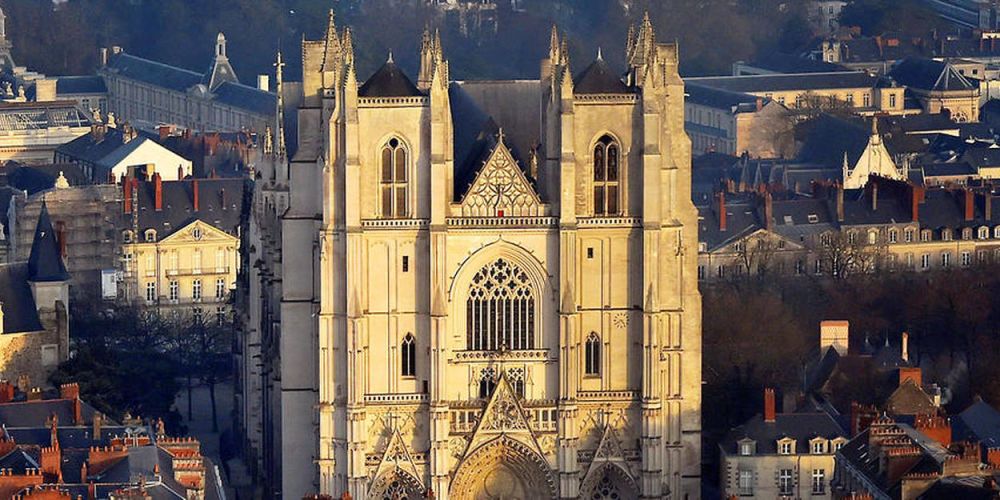

The Cathédrale Saint-Pierre-et-Saint-Paul, also known as Nantes Cathedral, is a Roman Catholic church located in Nantes, in the Loire-Atlantique region of France. This monumental cathedral has been a pivotal landmark in Nantes' skyline and spiritual life for centuries.
Construction of the cathedral began in 1434 and took more than 450 years to complete, with its dedication finally taking place in 1891. The cathedral showcases a Gothic architectural style, boasting a majestic facade, intricate interior, and impressive stained glass windows. The long history and architectural marvels of this cathedral have made it a focal point for tourists with an interest in history, architecture, and religion.
Tourism at Cathédrale Saint-Pierre-et-Saint-Paul started gaining momentum in the 19th century, following its completion, as travelers began to explore more extensively across Europe. The cathedral's historical significance, coupled with the tombs of figures such as Francis II, Duke of Brittany, and his wife, Marguerite de Foix, attracted history enthusiasts and those interested in royal lineage.
During the 20th century, the cathedral sustained damage during World War II, which necessitated restoration work. These restorations not only preserved the integrity of the cathedral but also renewed interest in its historical and architectural significance, leading to a boost in tourism.
In the 21st century, the cathedral has incorporated modern tourism trends to enhance the visitor experience. Interactive tours, audio guides, and multilingual information plaques allow visitors to engage more deeply with the cathedral's history. Additionally, special exhibitions and concerts are frequently held within its grand interior, adding a vibrant, cultural dimension to its tourism appeal.
The advent of social media and online platforms has brought the cathedral to a global audience, with tourists often sharing their experiences online, thus increasing the site's visibility and popularity. The use of technology, such as virtual reality experiences of the cathedral's construction and history, is one of the latest trends being adapted to attract tech-savvy travelers.
Cathédrale Saint-Pierre-et-Saint-Paul is open to visitors throughout the year and offers free admission, making it accessible to a broad audience. The cathedral also benefits from its location in the heart of Nantes, surrounded by other historical attractions, quaint cafes, and shopping areas, enhancing the overall tourist experience in the city.
To conclude, tourism at the Cathédrale Saint-Pierre-et-Saint-Paul in Nantes, France, has evolved from modest beginnings into a well-established component of the region's cultural and historical attractions. As the cathedral adapts to new trends and visitor needs, it continues to be a cherished destination for millions seeking to explore the richness of French Gothic architecture and the narratives encapsulated within its walls.